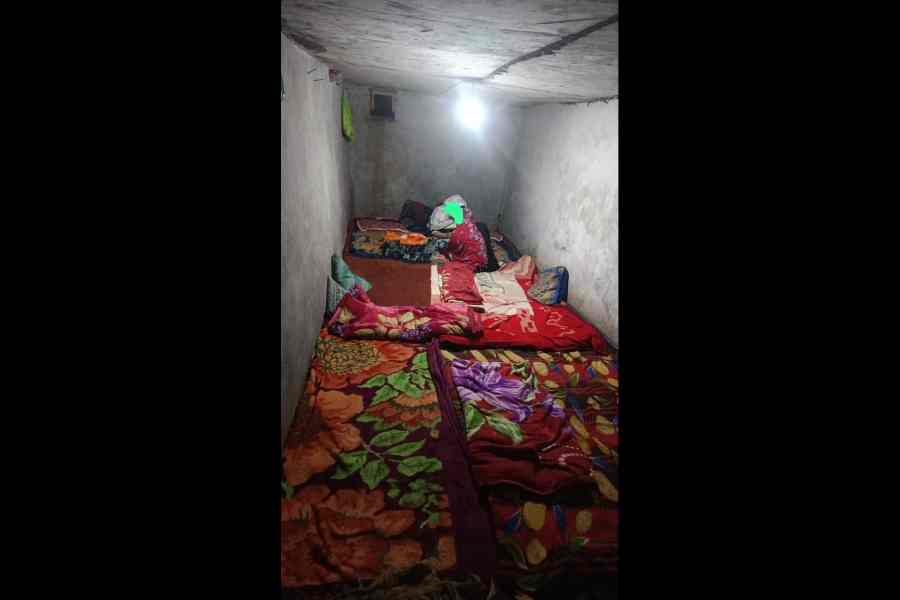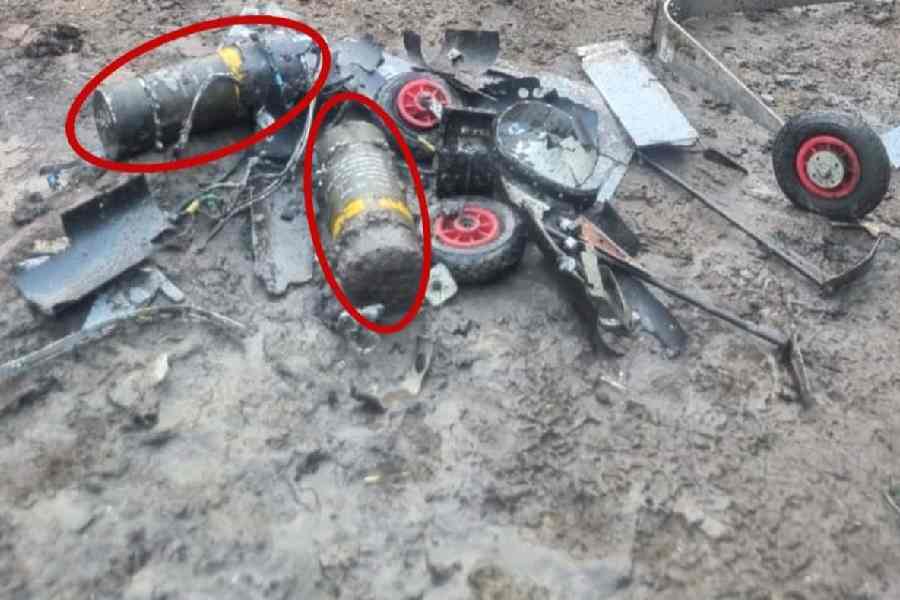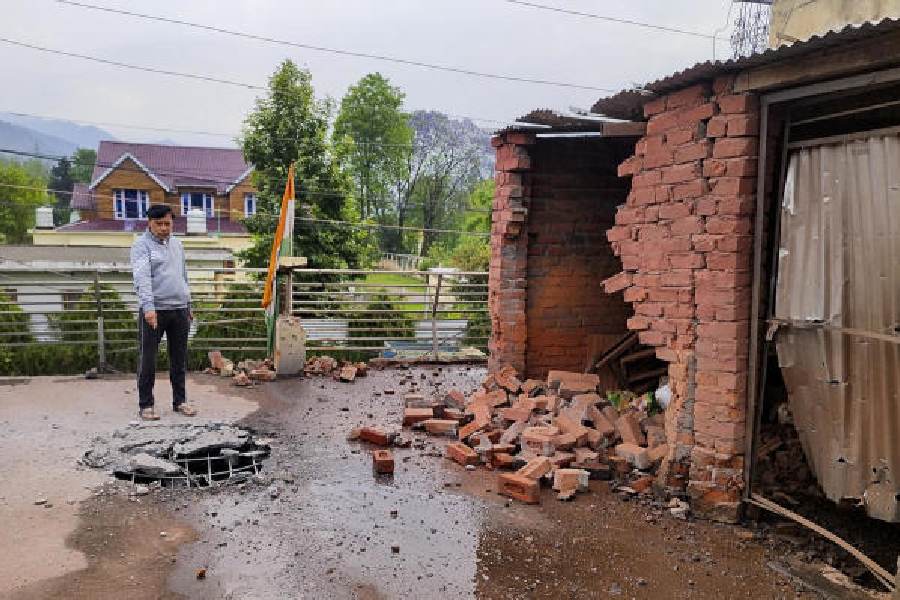 |
| It will be difficult to press firemen into service inside the narrow and congested lanes of Guwahati in case of any disaster. Picture by S.H. Patgiri |
Disaster management and mitigation have assumed importance in Assam and the northeastern region because of the increasing numbers and the rising intensity of different types of natural disasters in recent years. Several waves of flood every year have become a regular feature in the Brahmaputra valley. In fact, this has been the direct consequence of the great earthquake of August 15, 1950, when the entire river topography underwent a drastic change. In most parts, the river became shallow allowing the swelling waters to overflow its banks quite often during the monsoon season. Largescale erosions also started in the aftermath of that earthquake.
A vivid picture of the Brahmaputra devouring a major portion of the then beautiful Dibrugarh town has been ably recorded in the memorable documentary film The Defence of Dibrugarh in the inimitable voice of late Lawrence Clarke. It also shows the determination of the then Prime Minister, Jawaharal Nehru, who visited Dibrugarh thrice and ordered that the remaining parts of the town had to be saved at any cost. Similar erosion is still continuing in the river island of Majuli. Erosion damages are permanent in nature and cannot be recouped.
To quote the report of the expert group attached to the vulnerability atlas of India, “The Assam quake of 1897”, measuring 8.7 on the Richter scale, “is the largest earthquake ever known. The Sadiya earthquake of 1950”, measuring 8.6 on the Richter scale, “was one which is rarely repeated in the world. These earthquakes were so great that even topographical changes of level and the like took place but the loss of life was not so great since in 1897 the population was not so large and the 1950 earthquake occurred in rather unpopulated region”.
The tremendous increase in the population of the region and the proliferation of “non-engineered masonry and concrete constructions” since 1950 prompted the report to conclude that “the danger to life and property in future earthquakes is on the increase with each passing year”.
In this context it is important to note that the whole of Assam and Arunachal Pradesh have been coloured red as “very high damage risk zone” in the vulnerability atlas of India. As many as 350 known earthquakes of more than 5 on the Richter scale, including 15 of more than 7, were reported in this area. A graphical picture of the topographical changes wrought by the earthquake of June 12, 1897 is available in R.D. Olham’s book. He was then the superintending geologist of the Geological Survey of India.
At the time of the August 15, 1950 earthquake, we were schoolboys in Guwahati. We still remember the tremors, the smell in the atmosphere and the colour of the water in the Brahmaputra, overflowing with fish and animals in the following weeks.
The estimate of damages caused by floods in Assam run into hundreds of crores of rupees every year. In addition, other natural calamities such as erosion, cyclones, hailstorms, tornadoes, landslides, epidemics, bush fires and so on cause frequent loss of life and property. This has been recognised as one of the causes of Assam’s backwardness and the recent deceleration of its economy. If an earthquake of more than 8 on the Richter scale should strike Guwahati today the damages might be mind-boggling. People in the multi-storied buildings, many of which have been constructed with scant regard to accessibility and evacuation routes, might get trapped. In the congested and narrow lanes and bylanes, where even Fire Brigade vehicles cannot enter, many people might be crashed in stampedes. Falling buildings and debris might kill large numbers. The other probable consequences normally are disruption of transport and communication, breakdown of civil supplies and medical facilities and even riots and epidemics.
It would be impossible to face such a situation unless proper preparations are made in advance. It may not be necessary to stockpile supplies of the required materials such as foodgrains, clothes, drinking water, tents, boats, vehicles, medicines, medical equipment, animal fodder and so on. However, their availability in easily accessible locations should be ascertained and listed for reference at the crucial moment.
Similarly, volunteers should be identified, categorised and trained for different activities related to rescue, relief and rehabilitation. These volunteers need not work on a full-time basis. Only a few persons of high capability need to be given regular appointment. They should keep track of supplies, volunteers and the warning systems. They should also train the other volunteers and create awareness among the public. They should assume leadership when the crisis occurs.
The other volunteers should be trained to perform particular duties at specific times. They and the concerned public officials should be organised into groups such as rescue teams, relief workers, medical squads, boat crew, vehicle operators, veterinary and animal husbandry personnel, agriculture experts and others. Such training in advance will evoke positive response from them at the crucial moment.
Non-government organisation (NGOs) can play a major role in disaster management and mitigation. They can take up all the activities listed above. Besides, they can provide special care and attention to pregnant and lactating mothers, orphans, mentally-disturbed people, infirm and disabled persons, senior citizens and so on.
In Guwahati, the Don Bosco Youth Mission and Education Services has already started training and awareness campaigns. Other NGOs can follow suit.
The state government, including all its concerned departments and the district administrations, should take the lead and start early action in this regard. The initiative taken by the Kamrup district administration in preparing a contingency plan is laudable.
Only recently, on October 29, for the first time, Assam observed national disaster reduction day, which happens to be the anniversary of the supercyclone that struck Orissa on October 29, 1999. The observance was timely. It is essential to propagate the idea of disaster preparedness and start both training and awareness programmes.
lThe writer is a former chief secretary of Assam










